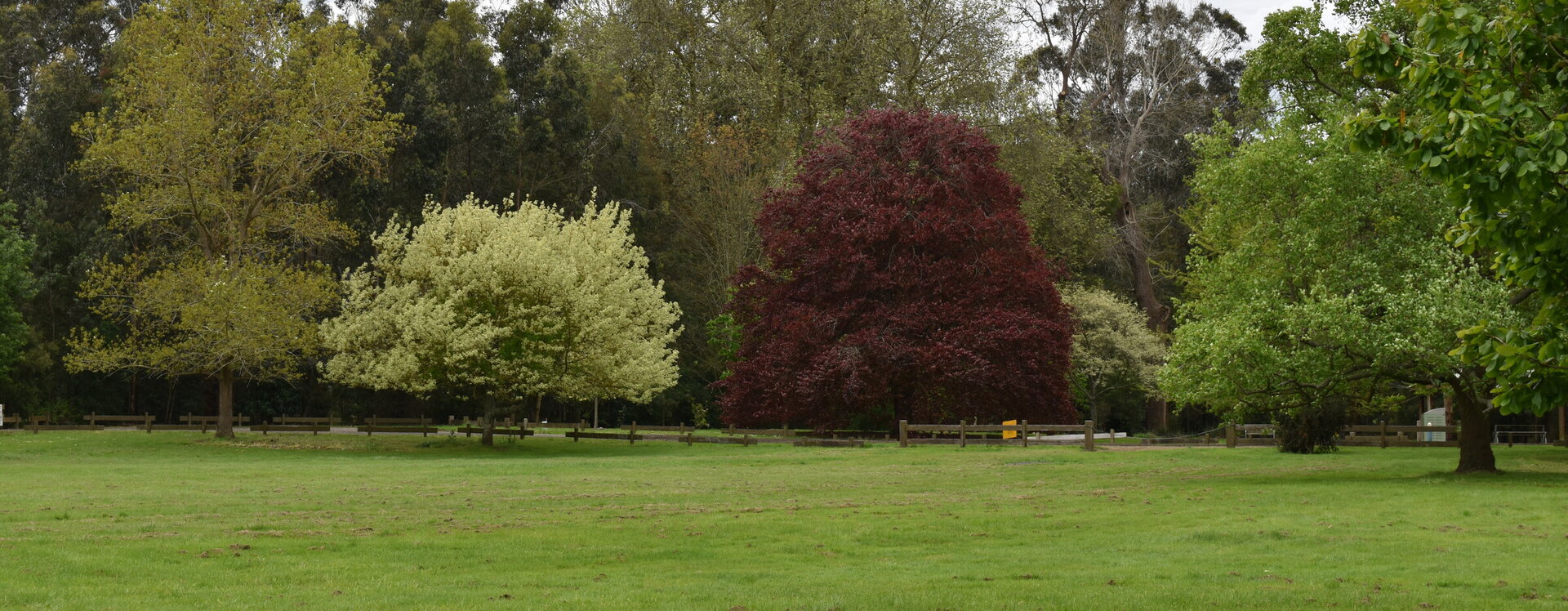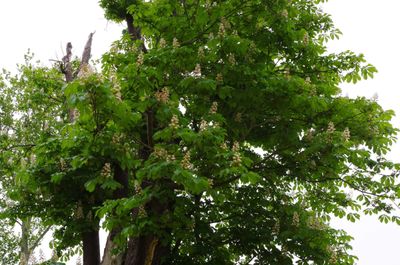
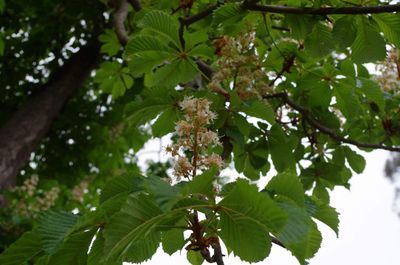
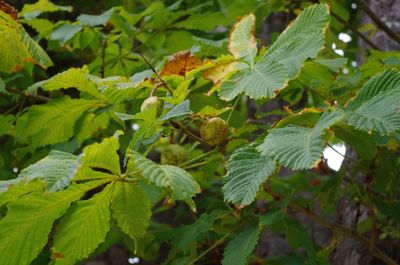
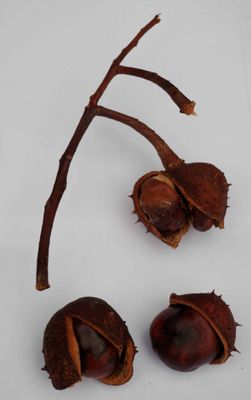
Aesculus hippocastanum
Aesculus
Aesculus hippocastanum, Horse chestnut or conker is a large deciduous tree, growing to about 35 metres with a domed crown of stout branches; on old trees the outer branches are often pendulous with curled-up tips. The leaves are opposite and palmately compound, with 5–7 leaflets; each leaflet is 13–30 cm long, making the whole leaf up to 60 cm across, with a 7–20 cm
petiole. The leaf scars left on twigs after the leaves have fallen have a distinctive horseshoe shape, complete with seven "nails". The flowers are usually white with a yellow to pink blotch at the base of the petals; they are produced in spring in erect panicles 10–30 cm tall with about 20–50 flowers on each panicle. Usually only 1–5 fruits develop on each panicle; the shell is a green, spiky capsule containing one (rarely two or three) nut-like seeds called conkers or horse-chestnuts. Each conker is 2–4 cm in diameter, glossy nut-brown with a whitish scar at the base.
The tree in Mossvale Park is an old one, but the planting date is unknown.
19.00 Location D5 Latitude: -38.4027367010397 Longitude: 146.052453122509
